
Source: Margerretta on Pexels
A Guide To The Northern Lights
What are the northern lights?
What are the northern lights?
Northern lights, or aurora borealis, are one the most magical of phenomena that illuminate the skies with dazzling, dancing lights, making for the most magnificent landscapes.
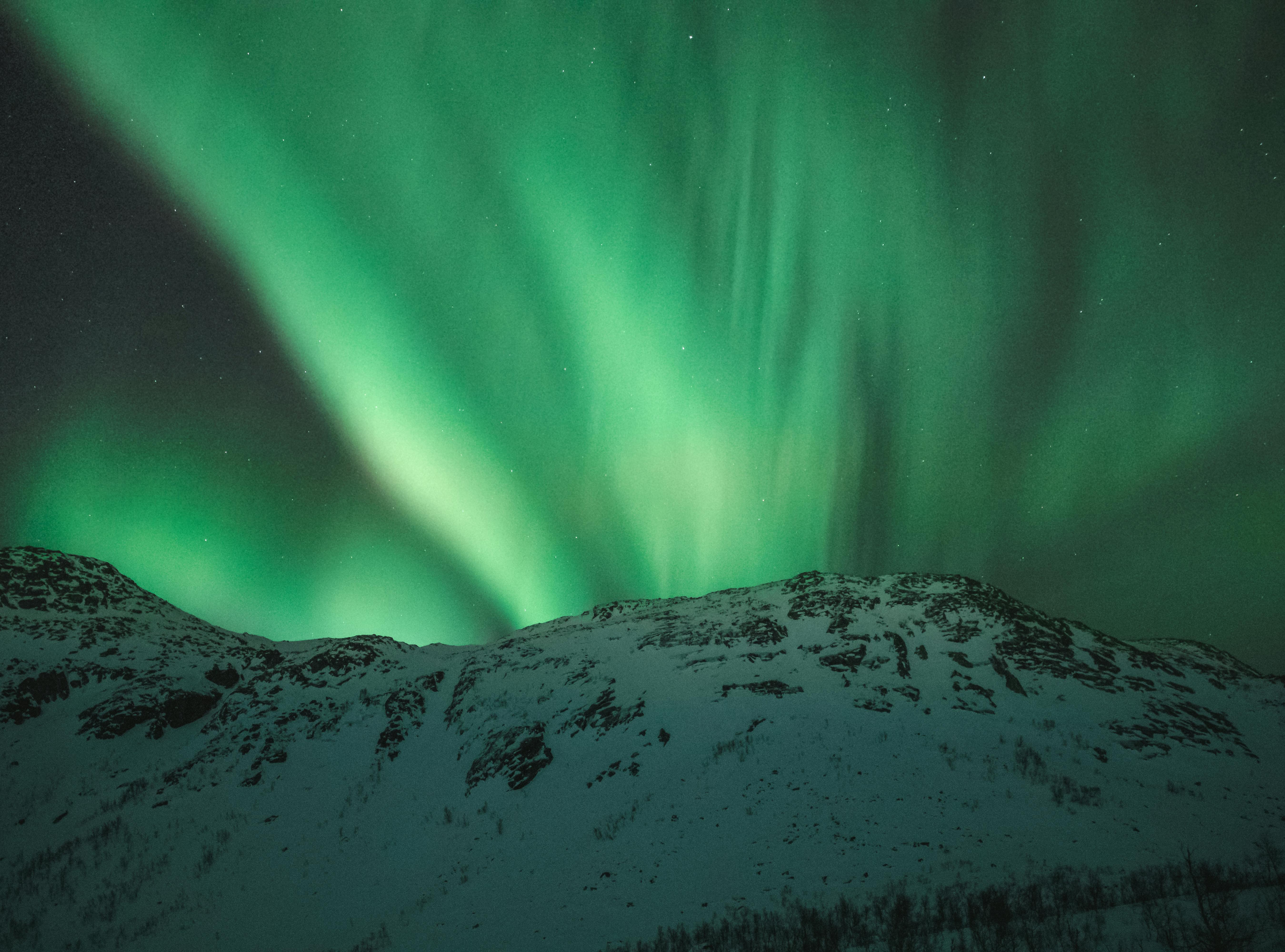
Source: Tobias Bjørkli on Pexels
These lights are formed when the electrically charged particles from the sun collide with the magnetic field of the Earth, which then pushes these particles towards the Earth’s poles. These particles then interact with the molecules in the Earth’s atmosphere, releasing these stunning purple, blue, and green lights, with green being the most prominent. The colors vary due to the elements released by gases in the atmosphere; oxygen makes them green, while nitrogen gives off blue, purple, and pink hues.
Every year, tourists visit the far-north countries of Iceland, Norway, Sweden, and Finland, among others, to witness this breathtaking phenomenon. If you are also planning to check it off your list, keep reading this elaborate guide to the northern lights that will answer all your queries and clear all your doubts.
The cultural and mythological significance of the northern lights
The cultural and mythological significance of the northern lights
.jpg)
Like any other celestial phenomenon, the northern lights have their fair share of myths and legends. While different regions and communities have defined it differently, one of the most common folklore in which these lights predominate is Norse mythology. Over the years, people who believe in Norse mythology have considered the northern lights a reflection of the shields and armor of the female warriors, Valkyrie. The northern lights were also celebrated as the manifestation of gods by the Vikings, the pirate explorers from the 9th to 11th centuries in the Scandinavian region.
The best months to see the northern lights in 2024
The best months to see the northern lights in 2024
Sometime in 2024, the sun is expected to reach solar maximum — the peak of its usual 11-year cycle. In the months preceding the solar maximum, the frequency and intensity of the solar storms increase, propelling electrically charged particles with more speed and increasing numbers. To put aside scientific terminology and explain it in simpler terms, the aurora in 2024 is expected to be at its best and brightest in the last 20 years. Thanks to the intense solar storms, it will also be visible further south than usual, offering people in some parts of the UK and southern Canada an opportunity to witness the dazzling lights. If you plan to catch this stunning phenomenon, it would be best to check the aurora forecast and plan a trip up north during the equinoxes between September and March for the best experience.
Destinations offering the best views of the northern lights in 2024
Destinations offering the best views of the northern lights in 2024
• Iceland
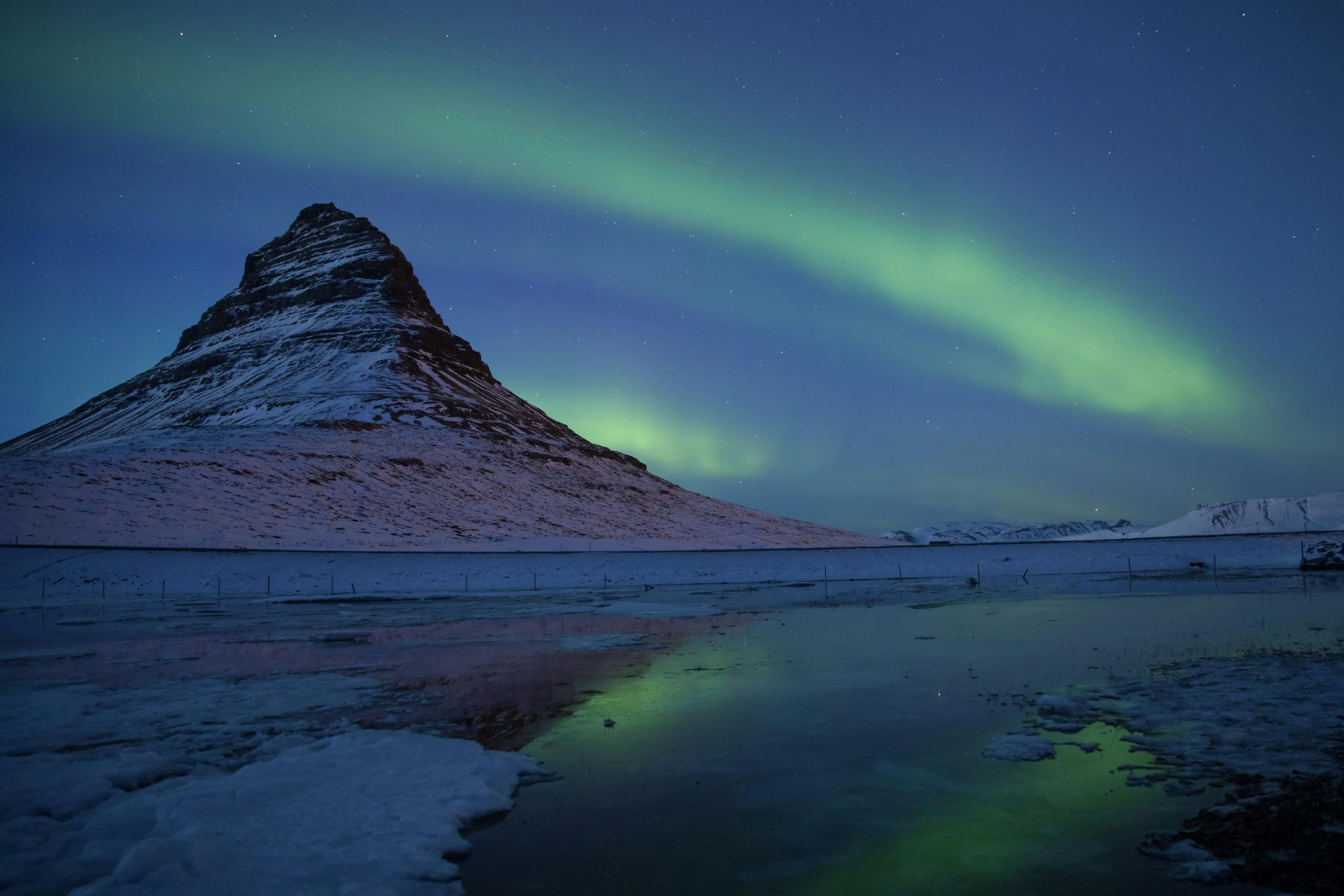
Source: Olivier Bergenon on Pexels
Over the years, Iceland has been one of the topmost countries for tourists wanting to witness the dazzling northern lights. Even though the national capital, Reykjavik, might not offer the best viewing experience due to light pollution, you can still enjoy the northern lights by setting up camp on the small peninsula of Seltjarnarnes.
To take your viewing experience to the next level, you can visit destinations with minimal light pollution, such as Vatnajökull National Park and Thingvellir National Park. You can also find various hotels near Vatnajökull National Park, which make for a hassle-free time. Other regions from which you can catch the most stunning vistas of the northern lights include Snæfellsnes peninsula, Westfjords, and North Iceland. For a comfortable travel experience, you can find Airbnb vacation rentals in Snæfellsnes and Akureyri, a small town in northern Iceland.
As for the best accommodations to witness the aurora in the rest of Iceland, you can find farm stays and Airbnbs perfect for watching the northern lights. Depending on your budget, you can have a lavish stay in a luxury cabin or save your bucks by staying in a hostel or pod and capsule hotels. Apart from admiring the northern lights, you can also make the most of Iceland’s infinite number of hot springs.
• Norway
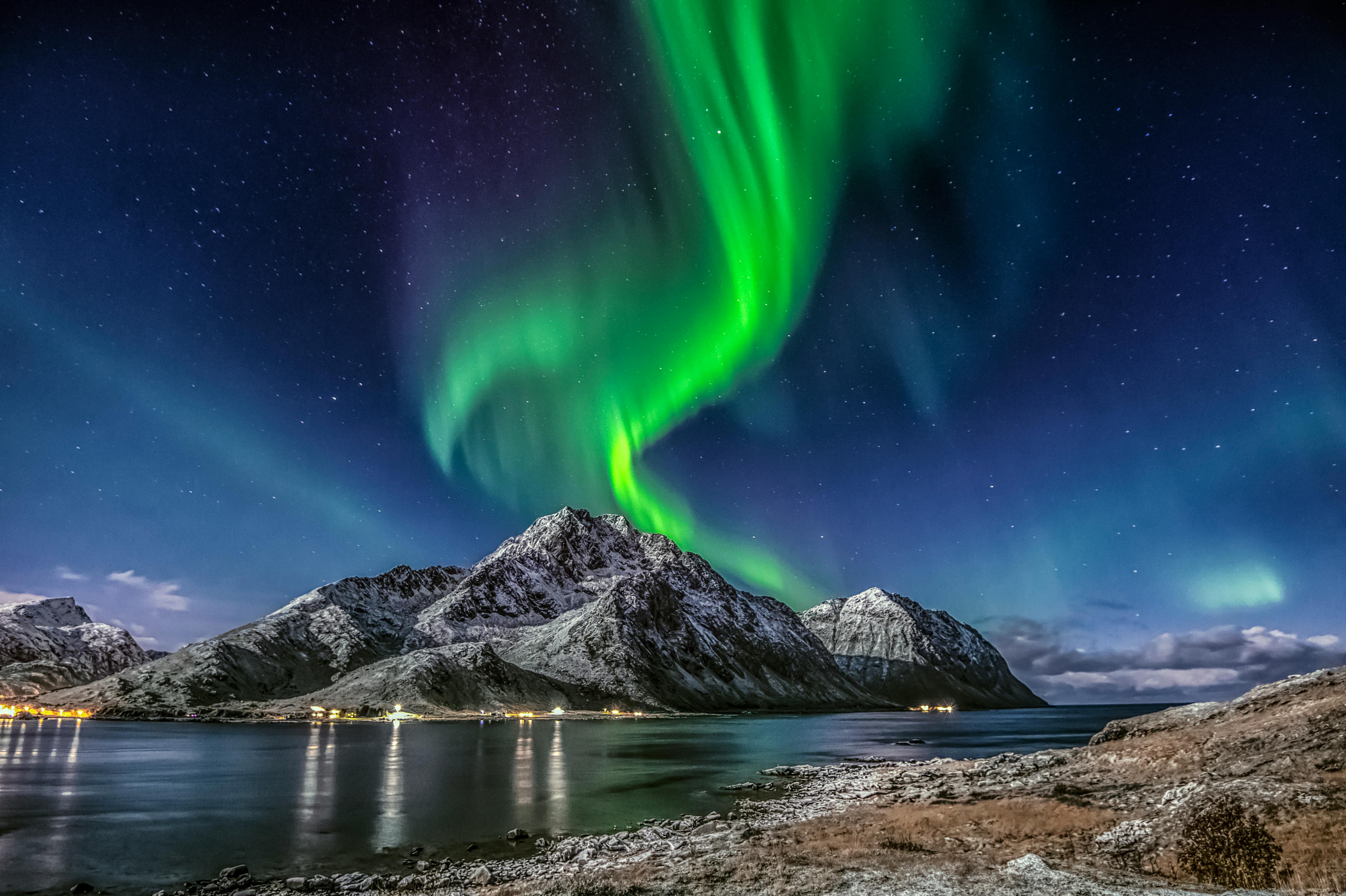
Source: Stein Egil Liland on Pexels
Norway's coastlines are dominated by rugged fjords, boasting some of the most dramatic coastal landscapes in the world. This stunning country also offers plenty of attractions and things to do for nature lovers. Applying the general rule of thumb, the aurora-viewing experience is better the further north you go, making the city of Tromsø and the remote towns of Kirkenes, Alta, and Hammerfest some of the best for aurora seekers. You can also take a flight from the national capital, Oslo, to the remote Arctic Circle archipelago of Svalbard. Apart from the northern lights, Svalbard is also perfect for witnessing the polar nights.
Apart from catching the northern lights, it would be best to check out the several exciting things to do in Oslo, such as sampling must-try street food and exploring the art museums.
For a hassle-free travel experience, you can find Airbnb vacation rentals in some of the best aurora-viewing destinations, such as Tromsø, Lofoten, Narvik, Bodø, and Svalbard. For unique accommodations, you can find glamping spots and glass igloo hotels in Norway, both of which make for a stunning aurora-watching experience.
• Finland
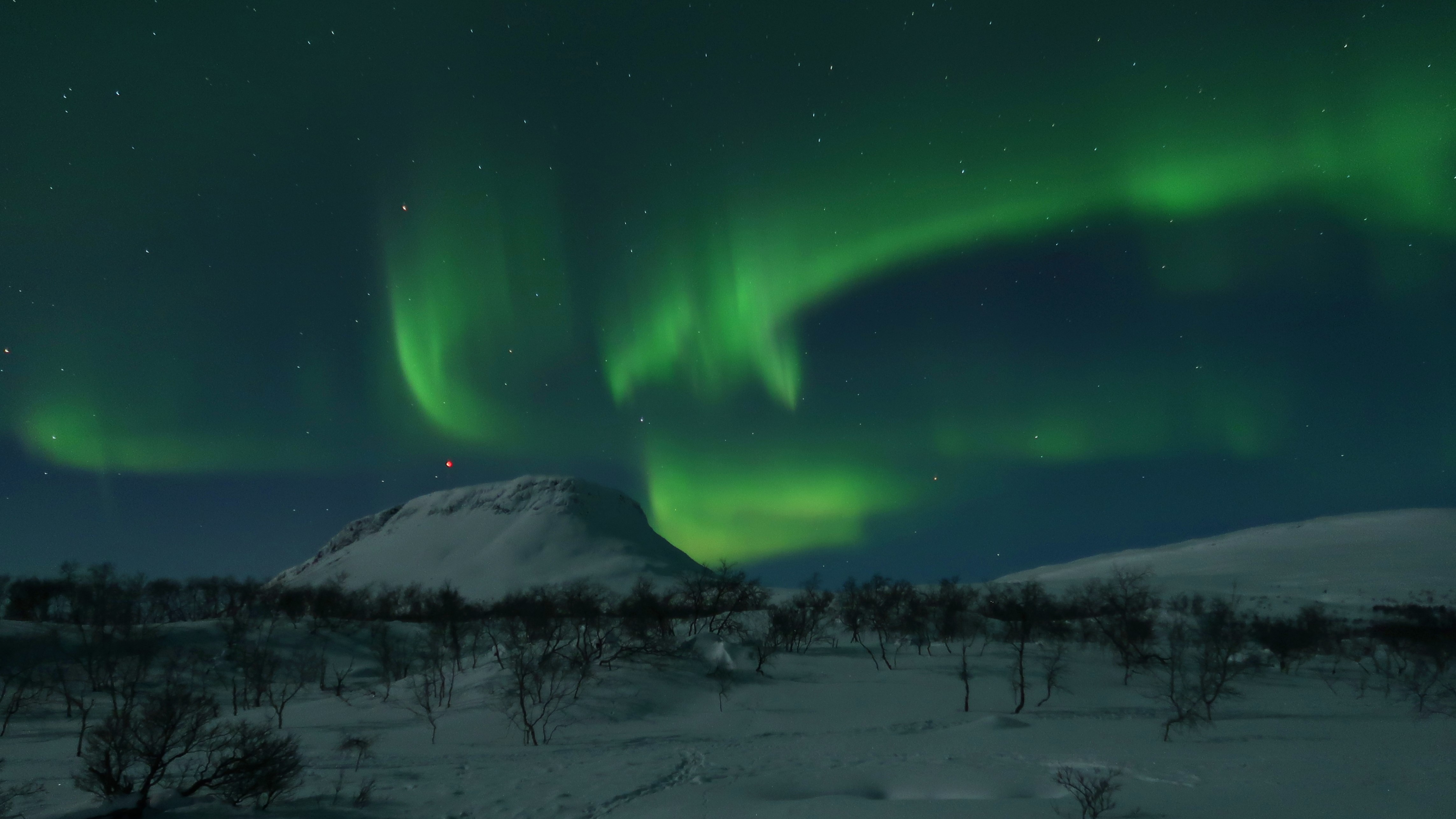
Source: WikiLucas00 on Wikimedia Commons
While you can find a charming destination to visit in Finland in each season, the winters seem to be the most lucrative as they offer you an opportunity to witness the northern lights and polar nights. Lapland, which is the largest and northernmost region in Finland, boasts some of the best destinations for witnessing the aurora, such as the regional capital, Rovaniemi, and the towns of Kemi, Muonio, and Utsjoki.
With plenty of glamping spots across Finland, you can have an adventurous experience witnessing the northern lights. Other unique accommodations that you can book for your northern lights getaway in Lapland are glass igloo hotels and yurts.
• Sweden
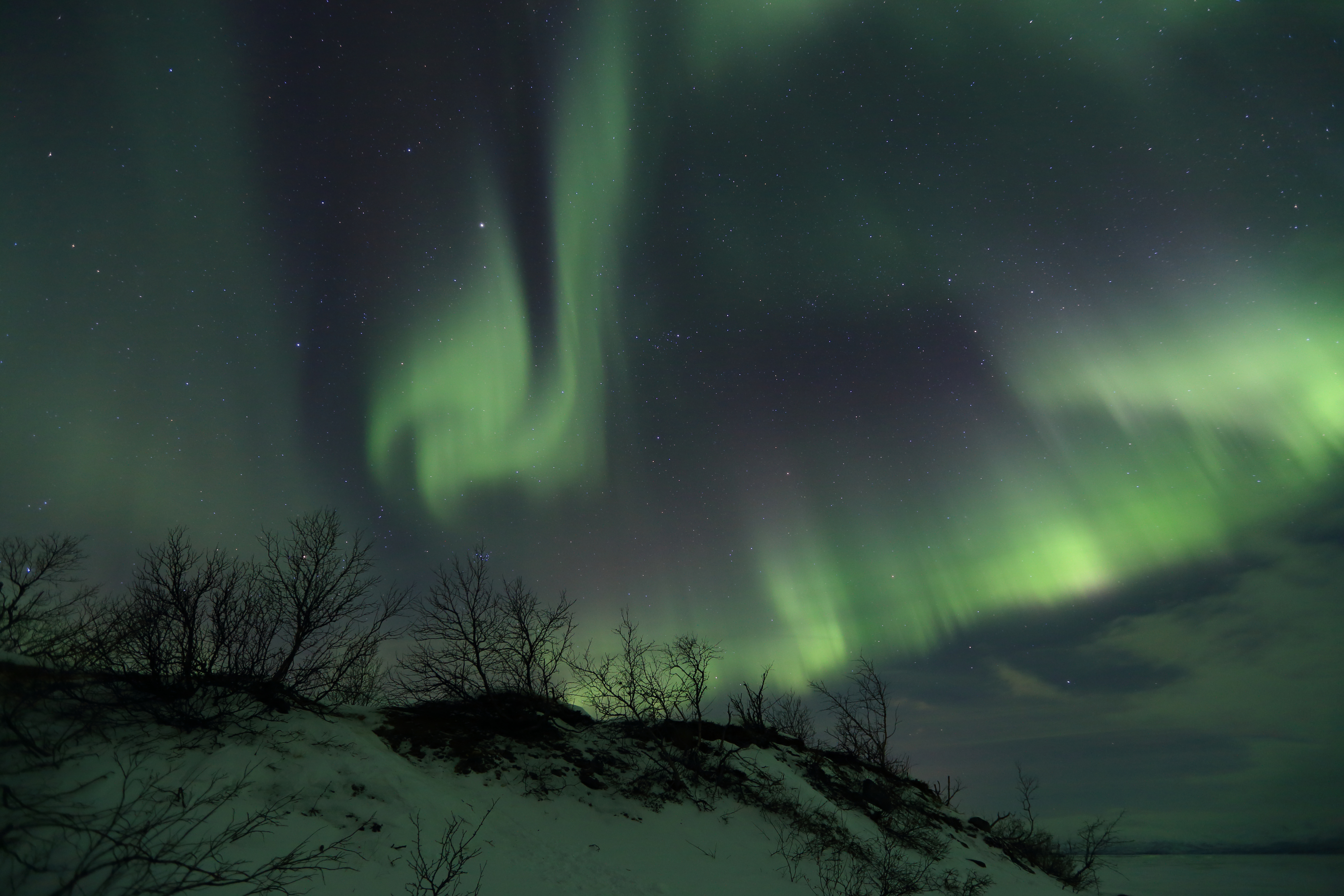
Source: Pavel.shyshkouski on Wikimedia Commons
Like the Nordic countries of Norway and Finland, Sweden offers the best aurora-viewing experience in its extreme north. While you can witness the northern lights from the national capital, Stockholm, you are guaranteed a better viewing experience if you catch a train or flight to the northernmost city of Kiruna. Kiruna also offers other attractions and things to do, such as ice fishing and an Arctic wildlife safari, apart from several Airbnb vacation rentals for a comfortable stay. You can also travel further north to the remote village of Abisko, where you can catch even more enthralling vistas of the aurora borealis. Among other things to do in Abisko, exploring the unique Sami culture in Abisko National Park is a must. A couple more destinations you can check out for a stunning experience are the waterside towns of Porjus and Jukkasjärvi. Other unique and remote accommodations you can book for a charming aurora-viewing experience in Sweden include treehouse hotels and glamping spots.
Once you have imprinted the vivid images of the aurora on your mind, you have to spend a few days in Sweden, exploring Stockholm's gorgeous neighborhoods and sampling the best of Sweden’s traditional food. To make the most of the snowy winters, arrive for your northern lights adventure in the holiday season and explore the charming Christmas markets in Stockholm.
• Alaska
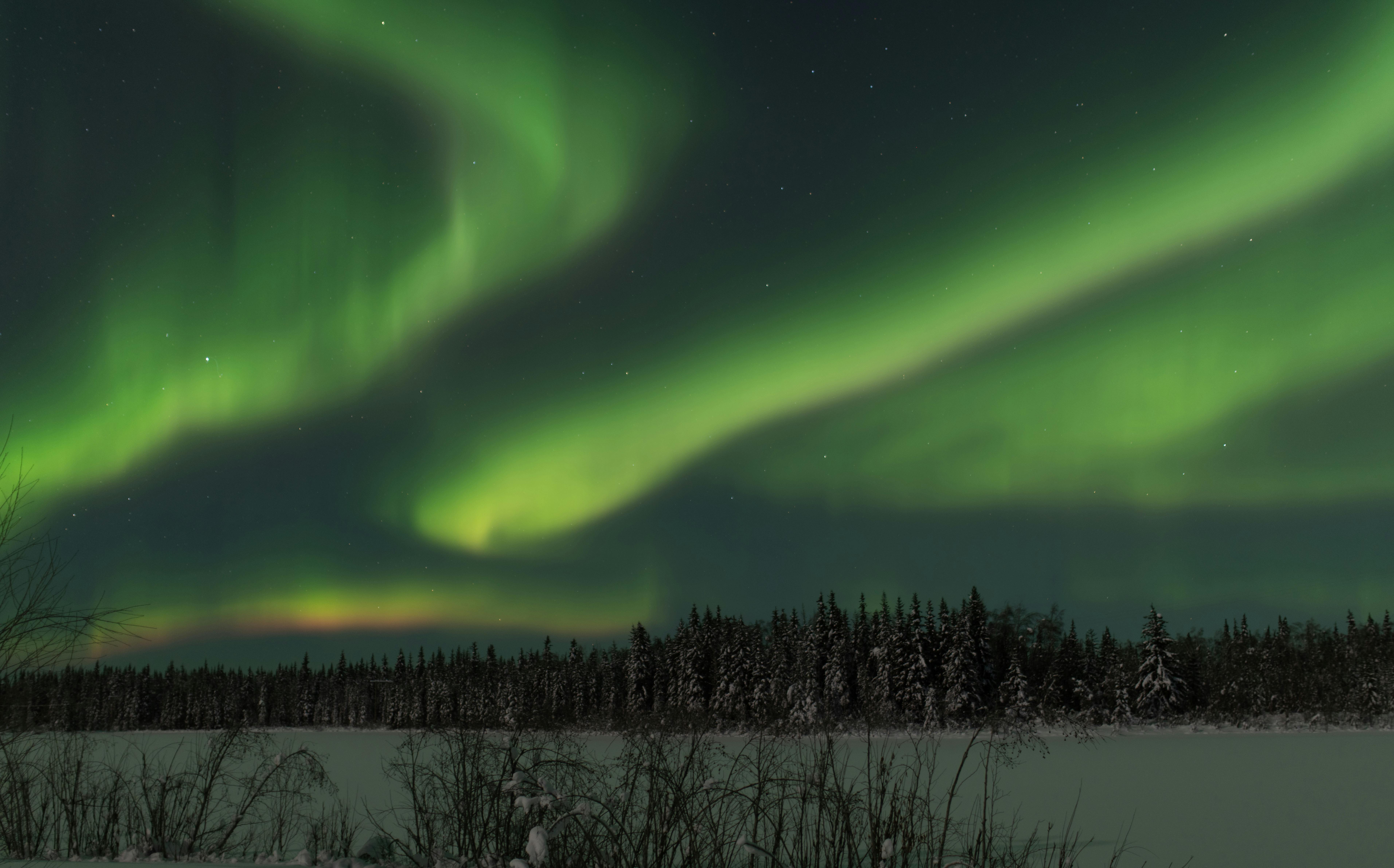
Source: John De Leon on Pexels
While people in the contiguous US might not be able to witness the aurora, they can always travel north to their 49th state, Alaska. While you can catch the northern lights from the state capital, Juneau, and the largest city, Anchorage, during winter, it would be best to travel further north to places such as Fairbanks for a better experience.
For those who want to witness the northern lights while staying in an urban setting, there are a variety of places to stay in Fairbanks, including Airbnb vacation rentals. For an even more adventurous time, you can book a yurt nearby or get an RV rental in the city to witness the aurora against different backdrops.
For nature lovers seeking the aurora, Denali National Park is the best destination. Catch the northern lights and some of the most magnificent landscapes in the national park while taking a road trip in a campervan or RV rental. Apart from the northern lights, you can also catch captivating views of North America’s highest mountain, Denali, by staying in a glamping spot near the mountain.
• Canada
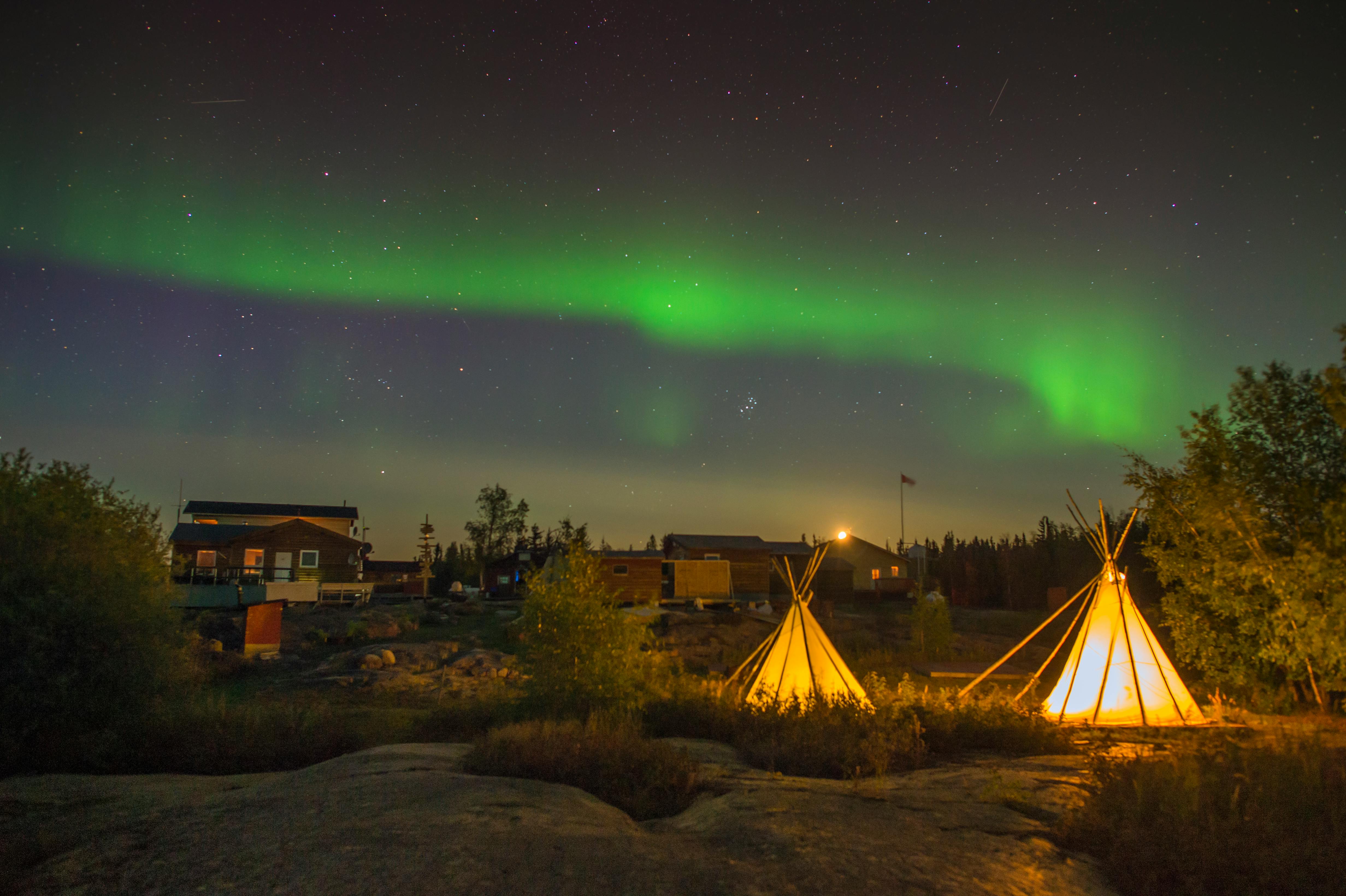
Source: Ken Cheung on Pexels
The vast and magnificent Canada is home to icy expanses of Arctic tundra to its north. These remote tundra regions feature dark skies with minimal light pollution, making them perfect for witnessing the aurora.
Offering captivating views of the northern lights for up to 300 nights a year, Churchill is one of the best places in the country to witness the phenomenon. The town sits on the shore of Hudson Bay in Manitoba and can be reached by train from the provincial capital, Winnipeg.
For another breathtaking experience, you can catch a flight to Yellowknife, which is one of the best places to visit in Canada for nature-loving travelers. Among other accommodations, you can find Airbnb vacation rentals and Airbnb houseboats in Yellowknife, which make for a charming stay on your auroral adventure. Apart from the Northwest Territories capital of Yellowknife, you can also catch the northern lights in Yukon’s capital, Whitehorse, where you can find a range of accommodations, including Airbnb vacation rentals and RV rentals.
To combine the views of the northern lights with the vistas of the sky-high, breathtaking mountains, you can check out several destinations in the Canadian Rockies. The mountain range is home to two popular national parks — Jasper National Park and Banff National Park. Even though the national parks are located a little to the south, they feature some of the darkest skies in Canada, with Jasper National Park also boasting a dark-sky preserve. For a once-in-a-lifetime experience, you can set up camp in one of the stunning campgrounds near Jasper.
Factors to consider when planning to see the northern lights
Factors to consider when planning to see the northern lights
• Conditions for viewing
Light pollution
Light pollution is one of the biggest factors affecting the visibility of the northern lights. It would be best to travel to a location with minimal light pollution to ensure you have the best aurora-viewing experience. For a stunning experience, it would be best to go as far as you can from the cities. You can also check the dark-sky preserves in your area as an additional measure.
Weather
The factor that affects the visibility of the northern lights the most is the clouds. To enjoy the unhindered and clearest views of the aurora, check out alerts and forecasts for clear and cloud-free skies and weather conditions.
Best times to see the northern lights
While the best time to witness the northern lights may vary between destinations, it is usually considered to be between September and March. The two equinoxes in these months are also considered a couple of the best times of the year to witness the magical phenomenon. Once you are in a far-north region between these months, be on the lookout for the dancing lights in the sky between 5pm and 6pm and the wee hours of the morning.
Solar activity
Solar activity encompasses the ejection of electrically charged particles, solar flares, and high-speed solar winds. The sun goes through a periodic 11-year cycle, during which solar activity follows a pattern. The higher the solar activity, the better and brighter the northern lights appear in the sky.
• Preparation
Aurora forecast apps
Depending on the region you are in, you can find aurora forecast apps that can help you plan your trip better. Some of the best apps and websites you can check out are Hello Aurora, My Aurora Forecast and Alerts, and Aurora Service Europe.
Apart from checking the aurora forecast, you can also check for cloud coverage on mobile apps. You can find these apps on Android’s Google Play Store and Apple iOS’ App Store.
Booking guided tours
As tourists visit the Nordic countries every year to witness the northern lights, you can find plenty of tour guides and services offering guided tours in top destinations, such as Reykjavik, Tromsø, and Kiruna. These tours allow you to merge your auroral adventure with activities, including snowmobiling and nature exploration, among others. However, do keep in mind that they can cost around 100 USD in most top destinations.
Booking appropriate accommodation
It would be best to choose your accommodation appropriately for the best viewing experience and a comfortable time. If you want a private viewing experience, you can book accommodation with outdoor areas for maximum privacy. If your accommodation doesn’t include an outdoor area, make sure that it’s close to an aurora-viewing spot.
You can even combine your northern lights experience with an adventurous stay, such as a yurt rental or a glamping spot.
Packing essentials
The far-north regions often put tourists in sub-zero temperatures, especially during the autumn and winter, which are the best periods to witness the aurora. So, it’s advisable to pack layers of warm clothes. It would also be best to keep a power backup for your phones and devices, as the aurora might take you to remote places. If you are planning on taking photographs, make sure to pack the necessary equipment.
Safety considerations
While undertaking any journey, you can always take certain precautions to ensure your safety. It becomes even more important in this case, as the aurora can take you to some remote locations. Moreover, it would be best to keep your trusted contacts handy and your phones sufficiently charged while traveling. You can also keep a few medicines and first-aid supplies with you in case of an emergency.
Learning about local customs and traditions
Countries have distinct cultures, and while this is another positive factor for tourists, it also puts the onus back on them to be mindful of those customs and traditions. So, before you travel for your auroral adventure, make sure to learn the basics of the local culture.
Managing expectations — what if the northern lights aren't visible?
Managing expectations — what if the northern lights aren't visible?
You checked the aurora forecast, studied the weather to be on the even safer side, booked accommodation, and caught your flight for the anticipated northern lights adventure. Now that you are at your destination, there will be chances of nature being fickle and not letting you witness the magical phenomenon you traveled for. So, before you plan your journey, it would be best to prepare yourself for an instance like this and manage your expectations.
The destinations that offer the most enthralling views of the aurora are often remote and make for breathtaking landscapes. Aside from the aurora-viewing experience, you can deem it a once-in-a-lifetime getaway to the Earth’s remotest locations. Many of these destinations also have plenty of other attractions and things to do. In Iceland, you can check out some of the best hot springs in the country, while in Norway, you can witness the most dramatic fjord formations and other must-dos. Moreover, Sweden and Finland offer more adventures and allow you to make the most of the Arctic region. So, even if the northern lights don’t show up during the period of your stay, you can always stay hopeful to witness them the next day and keep exploring stunning landscapes in the meantime.
Photography tips for capturing the northern lights
Photography tips for capturing the northern lights
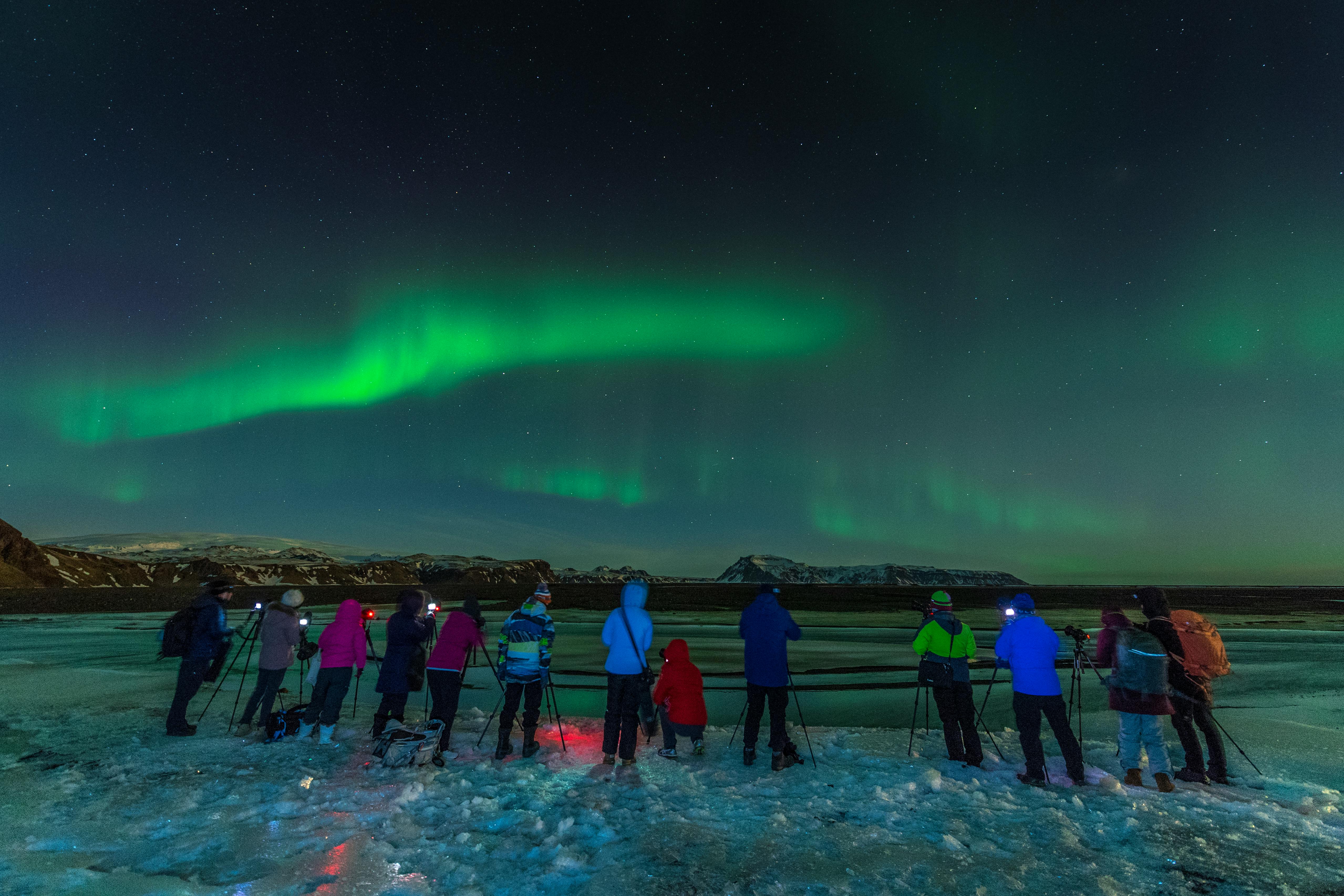
Source: Ken Cheung on Pexels
• Carry a sturdy tripod
Since you will be taking long-exposure shots, a tripod is a must. Now, if you are not a professional photographer and don’t know the importance of a solid tripod, keep in mind that it’s going to carry the weight of your expensive camera on uneven ground levels. To be sure that the camera is safe and the photos are sharp, it would be best to choose a sturdy tripod.
• Choosing the right lens
Photographers today have endless options when it comes to lenses. For capturing the northern lights, choosing a wide-angle lens that covers an expansive view is advisable. Another important factor to consider is the aperture. You can also choose a lens with a wide aperture that can shoot at least at f/2.8. Moreover, you can set your f-stop number at f/1.8 if your lens can shoot that wide for even better results.
• Bring a camera with manual settings
Use a camera with manual settings for capturing the best photos. Depending on how fast the aurora is moving, you can try capturing photos with your shutter speed between 10 seconds and 30 seconds. Moreover, you can keep your ISO between 800 and 2000. You won’t need to crank it up that much because the slow shutter speed will nicely expose your shots. As for the aperture, it would be best to keep a wide aperture for the sharpest photos.
• Be patient and choose a perfect frame
To be good at any creative thing, you need to have the maximum patience. In case you are not satisfied with your photos, keep finding different frames until you find the perfect one.
• Capture raw and process later
It’s always best to shoot in RAW to preserve maximum details in your photos. Shooting in RAW gives you more freedom in editing and easily allows you to give your photos the desired look.
• Tips for taking good photos of the lights with a phone camera
Just like the camera, getting clear sky photos from a phone involves stability while capturing, making the tripod stand the key. Most phones allow users to set the shutter speed manually. Set the shutter speed to at least 15 seconds and put it on a tripod to get sharp, exposed photos. Also, make sure to use the phone’s original camera app instead of third-party apps, as the phone's original camera app provides maximum detailing.
Admire one of the Earth's most magical phenomena
Admire one of the Earth's most magical phenomena
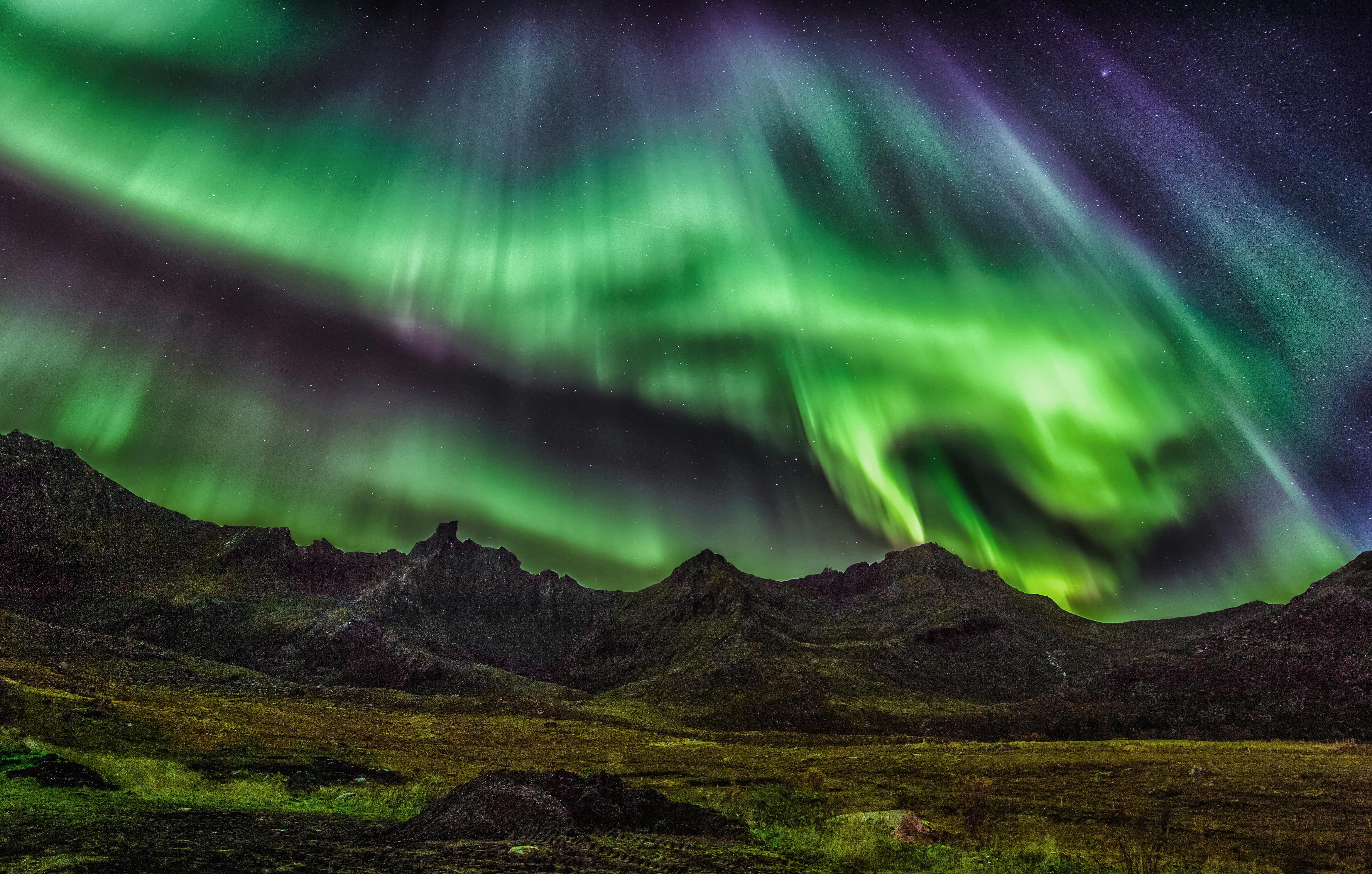
Source: stein egil liland on Pexels
From all the events that occur up in the sky to any natural landmark down on the surface, the northern lights are probably the most magical phenomenon. It enthralls anyone who sets eyes on them, making for the most unique and breathtaking sights.
If you have long been thinking of witnessing them for yourself, take this guide as a sign and book a flight to Alaska, Canada, or one of the Nordic countries. Once you’re there, make the most of the captivating scenery and have a wonderful time!
Other articles related to the northern lights


Create an account to